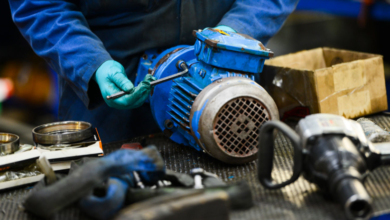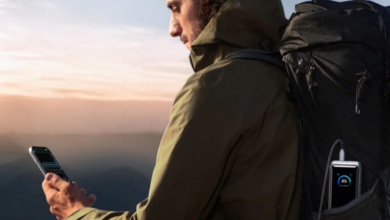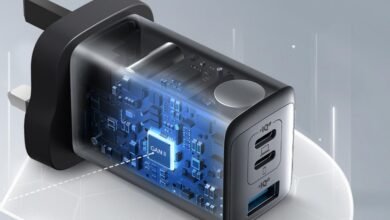
The Role of Smart Navigation in Robot Vacuums
Introduction
Smart navigation plays a vital role in modern robot vacuums. Addressing the diverse layouts and cleaning challenges present in various homes, advanced navigation technologies ensure effectiveness and efficiency. These systems enable robot vacuums to map homes, detect obstacles, and plan their routes. Unlike older models that relied on random movement, modern robot vacuums utilize a combination of sensors and algorithms to achieve better results.
Types of Navigation Systems
Modern robot vacuums use various navigation systems, often combining multiple technologies for enhanced performance. These systems include:
- Random Navigation: The most basic method, where the vacuum moves randomly, changing direction upon impact. This is inefficient but suitable for small, open spaces.
- Gyroscope and Accelerometer Navigation: Utilizes motion sensors to track changes in direction and angle, providing a semi-structured cleaning pattern suitable for simple, single-level homes.
- Sensor-Based Navigation: Employs physical sensors to detect obstacles and prevent falls, ideal for mixed flooring environments.
- Camera Mapping: Uses cameras to scan and create a map of the room, requiring consistent lighting for optimal performance.
- SLAM Navigation: Combines data from sensors and algorithms to create real-time maps, adapting well to complex homes.
- LiDAR Navigation: Uses lasers to measure distances and create accurate layouts, functioning effectively in both light and dark.
- Combined Technologies: Integrates multiple systems to deliver optimized cleaning patterns in various home environments.
See also: Streamlining Retail Operations With Advanced Technology
Random Navigation
Random navigation is the most basic approach. The vacuum moves without a set pattern, changing direction only when it encounters an obstacle. Although it may eventually cover the entire area, it often misses spots or cleans the same areas repeatedly. Random navigation is best suited for open rooms with few obstacles.
Gyroscope and Accelerometer Navigation
These systems track movement using sensors similar to those in smartphones. While they don’t create maps, they follow structured cleaning patterns. This technology is suitable for simple, single-level homes with minimal clutter.
Sensor-Based Navigation
This approach relies on physical sensors to respond to obstacles and prevent falls. While it doesn’t create maps, it adapts better than random models and is great for mixed flooring.
Camera Mapping
Some vacuums use cameras to orient themselves within a room. These cameras capture images of the surroundings and use them to create a map. However, its effectiveness depends on consistent lighting.
SLAM Navigation
SLAM combines data from multiple sensors and algorithms to create detailed, real-time maps. Visual SLAM (vSLAM) captures images of the environment to build a 3D map. vSLAM adapts well to changes but performs best in well-lit environments.
LiDAR Navigation
LiDAR uses lasers to scan rooms, measure distances, and create precise layouts. The LiDAR sensor emits laser beams and measures the time it takes for them to return. This system works well even in the dark.
Combined Technologies
Premium models often combine multiple technologies such as LiDAR, cameras, and sensors to optimize cleaning patterns and avoid obstacles. These are well-equipped to navigate complex layouts, including multi-floor homes.
The Importance of Smart Navigation
Navigation is crucial for smart vacuums, especially in homes with clutter, pets, or large families. Advanced navigation systems improve cleaning efficiency and coverage, reaching tight spaces and reducing cleaning time and energy use. These systems also recognize obstacles, avoiding collisions with furniture and adapting to new layouts.
Choosing the Right Navigation System
Selecting the appropriate navigation system depends on factors like home layout, flooring, and lifestyle. Smaller apartments may benefit from visual navigation or LiDAR. Larger homes may require a combination of LiDAR and sensor-based navigation for multi-floor cleaning. Real-time obstacle detection is vital for homes with pets and toddlers.
FAQ
- How do robot vacuums navigate? They use sensors, lasers, cameras, and algorithms to detect obstacles and efficiently clean rooms.
- Do robot vacuums navigate without Wi-Fi? Basic navigation works without Wi-Fi, but remote control and virtual barriers require an internet connection.
- Can a robot vacuum navigate a multi-floor home? Advanced models can store multiple floor maps, suitable for multi-story homes.
Robot Vacuum Mapping
Robot vacuum mapping is when your device maps your home during its first cleaning. This allows it to better understand your home’s layout and clean all areas more effectively.
Mapping Technologies
Below are common mapping technologies used in robotic vacuum.
Camera-Based Mapping
This technology uses a digital camera to map by taking photos of landmarks around the house. While it maps well, it does not work in the dark without additional light sources.
Lidar-Based Mapping
Lidar uses an invisible spinning laser to detect information about the room’s size and obstacles. It is precise and cleans systematically in straight lines. This is the most precise mapping technology.
Gyroscope or Accelerometer Mapping
These sensors calculate the distance and direction of objects. Vacuums using this technology are affordable but less precise.
Combined Technologies
Some vacuums combine two or three mapping technologies with sensors to help the device navigate efficiently.
Role of Sensors
While moving, robot vacuums use sensors to detect environmental conditions.
Cliff Sensors
All vacuums have cliff sensors to prevent falls from stairs. It alerts the device when no ground is detected, prompting it to change direction.
Obstacle Sensors
These guide the vacuum around furniture and other objects by detecting contact and steering away from them.
Wall Sensors
These sensors use infrared light to detect walls and then clean along the boundaries without bumping into them.
Wheel Sensors
Light sensors count wheel rotation to determine the distance covered.
Robot Vacuum Cleaners
All robot vacuums are equipped with an array of sensors and, in most instances, a LiDAR detector and a camera to see its world.
Sensors
These include infrared sensors for detecting obstacles and edges, LiDAR to map floorspace, vSLAM technology that relies on a camera to point out the area, cliff sensors for staircases, dirt detection sensors that recognize soiled areas and bump sensors that trigger a change in direction.
Lidar
When it comes to mapping and navigation, most high-end robot vacuums use LiDAR. The robot emits laser beams, which are reflected from objects; the system detects the beam and uses a sensor to figure out how far away the object is. It can then use this information to build up a detailed map of an area and the objects in it.
vSLAM
Some robot vacuum manufacturers use vSLAM for navigation. The technology gives a robot vacuum the ability to navigate using a camera in order to capture images of its surroundings and identify points. The device uses these points to create a map of your home.
How Robot Vacuum Cleaners Avoid Obstacles
Robots carry cloud-based directories which include typical obstacles, such as phone cables, small toys and waste. When the robot’s front camera spots something, it skirts around the object. It takes a photo asking if the object should remain a feature of the home.




